What to consider when choosing a floor covering?
The floor covering for the hallway, although there are no wet areas in it, should be no less resistant than in the bathroom or toilet. This is due to:
- High cross-country ability... Whatever one may say, but on the floor in the corridor there is always someone walking: at least when entering and leaving the apartment, as a maximum (if the entrance hall is a checkpoint) also when moving between rooms.
- Seasonal humidity... In bad weather, when it is raining or snowing outside, the shoes also get wet. And then all this water and moisture goes to the flooring.
- Constant pollution... Dust and dirt from outerwear and shoes, whether you like it or not, will still settle on the floor in the hallway. And it's better to be ready for this.
In the photo, a variant of the combination of different floor coverings
Based on the pain points, we can conclude that the flooring in the corridor should be:
- Moisture resistant... That is, do not swell even from contact with water, and not just withstand high humidity.
- Wear resistant... Otherwise, it just shuffles over a few years.
- Easy to care for... You have to wipe or wash the floors in the corridor at least 2 times a week (and in the demi-season, every day!), So this should be easy.
Pictured is a tile with a marble texture
What material is better to make?
Floor coverings are different, but not all of them will fit in the front door area. Let's figure it out in more detail.
Tile or porcelain stoneware
Ceramic slabs are practically unmatched in terms of wear resistance! And design ceramic tiles can be found for every taste, and if you don't find a suitable one, you can lay out a pattern of multi-colored elements.
| pros | Minuses |
|
|
Important! Ceramic tiles in the corridor must be non-slip and have at least 3 strength class.
In the photo there is a light matte tile
Laminate
A low-cost analogue of a parquet board is made of chipboards covered with a film. Let us examine the feasibility of using it as a floor covering for the hallway.
| Strengths | Weak sides |
|
|
Read also: How to choose a laminate flooring? Tips and quality criteria
Linoleum
Roll material is easy to stack - you don't even need a professional's help. But will it work as a floor in a hallway?
| Dignity | disadvantages |
|
|
Read also: How to choose linoleum in the hallway?
Important! For floor finishes, choose commercial or quality semi-commercial varieties.
Wooden floor
Ordinary wooden logs have not been placed on the floor in the hallway for a long time. Refusal to use them is justified primarily by their impracticality: it is difficult to care for the tree, it is difficult to wash it, it is necessary to treat it constantly (1-2 times a year) with a protective compound. In addition, there is no moisture resistance in the characteristics of wood, which also does not allow us to call this option the best possible.
Carpet
At the peak of carpet popularity, it was considered almost the most successful covering possible: warm, beautiful, replaces carpets and rugs. But over time, the owners got to know its negative sides and began to refuse this option in any rooms, especially in the corridor.
The main negative properties of carpet:
- Difficult care... The coating must not be washed, vacuumed or brushed exclusively. At the same time, over the years, dust accumulates in its villi, which is almost impossible to remove.
- Allergenicity... Not only dust is dangerous, but also the glue that is used in production.
- Lack of moisture protection... Although the floors in the hallway will survive wet brushing, carpet cannot be called water-resistant.
Parquet
Parquet boards are classified as premium finishing materials. The surface is made of expensive valuable wood, the lower layers (usually 2) are made of simpler and cheaper ones.
| pros | Minuses |
|
|
Read also: What is better to choose a laminate or parquet board?
Bulk
Polymer self-leveling mixtures are one of the best options for flooring in the corridor that exist today. Judge for yourself:
| Strengths | Weak sides |
|
|
Vinyl floor
The correct name for this flooring material in the hallway is quartz vinyl tiles. It is based on a mixture of quartz sand, plasticizer and resin. The appearance and installation method is somewhat reminiscent of a laminate, but in comparison with the latter, the tile obviously wins.
| Benefits | disadvantages |
|
|
An additional bonus: a large selection of textures. Can imitate wood, concrete, natural stone.
In the photo there is light quartz vinyl at the entrance
Combined floor
One part of the standard combo is usually a tile - it takes the main hit in the zone front door... After 50-70 cm from the entrance, another coating can begin, which most often fits in a single contour throughout the apartment.
Advice! With a two-level floor, you can also use different types on each step.
Choosing a floor color
A simple interior rule that always works: the top is the lightest shade, the bottom is the darkest. This does not mean that the floors in the hallway should be black - a shade 2-3 tones richer than the walls is enough.
Representatives of medium brightness are considered universal and the most practical: standard beige shades of wood, medium gray shades of tiles, etc. On such a floor, dirt is least noticeable.
A floor that is too light or too dark (especially glossy) will have to be washed much more often. But dark tones look expensive and elegant, while light ones bring lightness to the interior.
What can be used to cover the floor?
If you have chosen not the most successful shade, or want to make the floor design in the hallway more comfortable, pay attention to the carpets! Unlike carpet, they can be moved away from the entrance and not be afraid of dirty shoes or wet clothes.
By the way, the palace can also make adjustments to the geometry of the space. For example, in narrow long corridors, a carpet with a transverse pattern will visually expand the walls. In an irregularly shaped room, a bright specimen will divert attention from the curvature of the walls.
Beautiful design ideas
The corridor is rarely decorated and usually remains the most boring room in the house, but it can be fixed by choosing a bright, unusual floor! The easiest way is to use tiles for these purposes: they are laid in a checkerboard pattern, assembled into geometric patterns, and used to create drawings.
The second option is also with tiles, but not with a single color, but with a printed one: this in itself is an accent and does not require additional efforts.
You can also change the way of styling. For example, put an ordinary laminate diagonally, or assemble a beautiful herringbone from a multi-colored parquet.
In the photo, an unusual pattern from a tile
Photo gallery
When choosing finishing materials for the hallway, first of all, pay attention to practicality: this applies to the floor, walls and even ceiling.


 10 practical tips for arranging a small kitchen in the country
10 practical tips for arranging a small kitchen in the country
 12 simple ideas for a small garden that will make it visually spacious
12 simple ideas for a small garden that will make it visually spacious
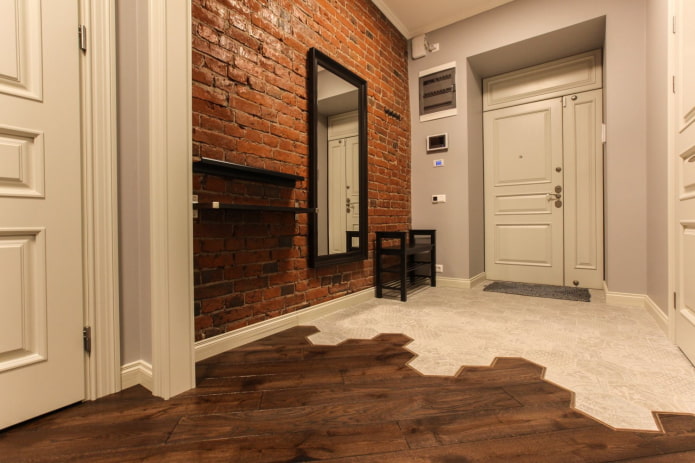

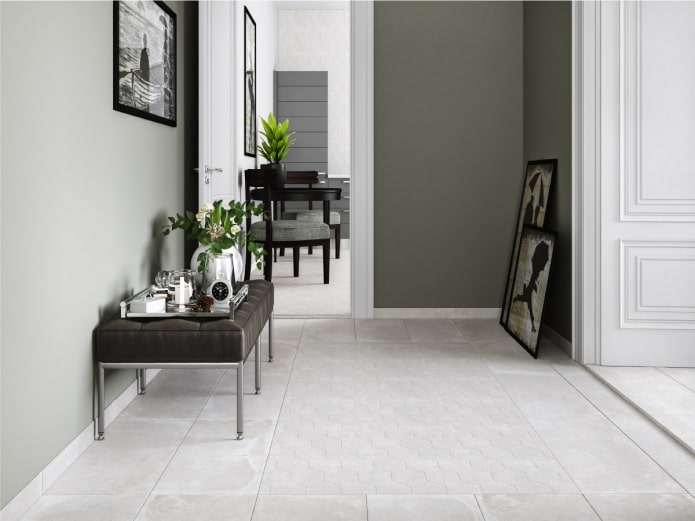
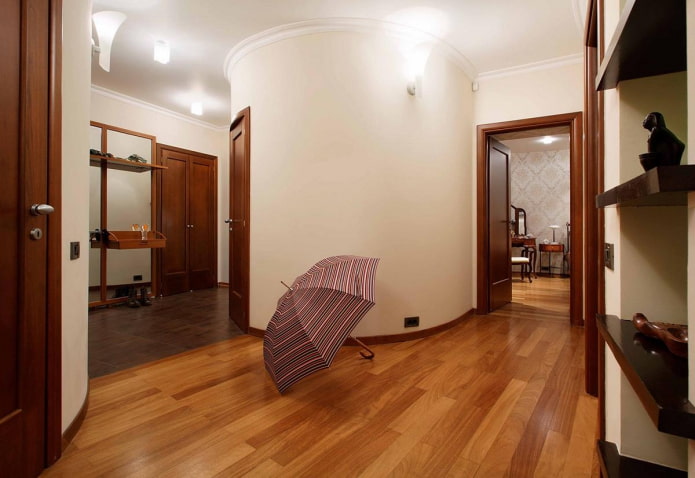

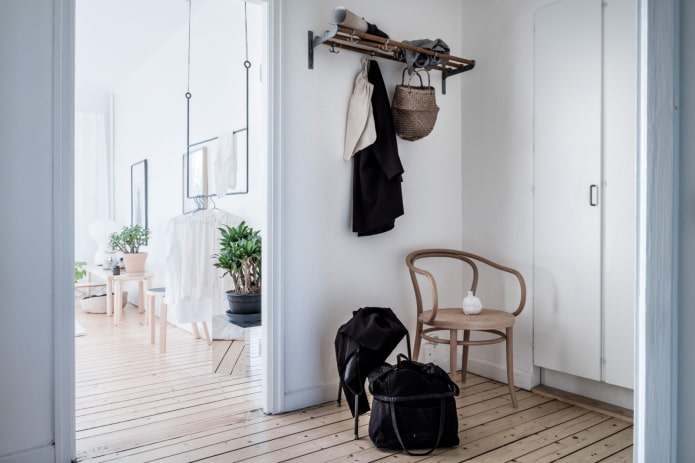

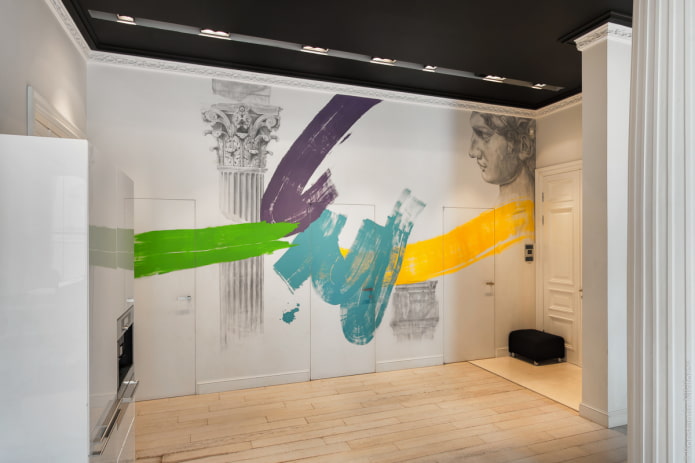
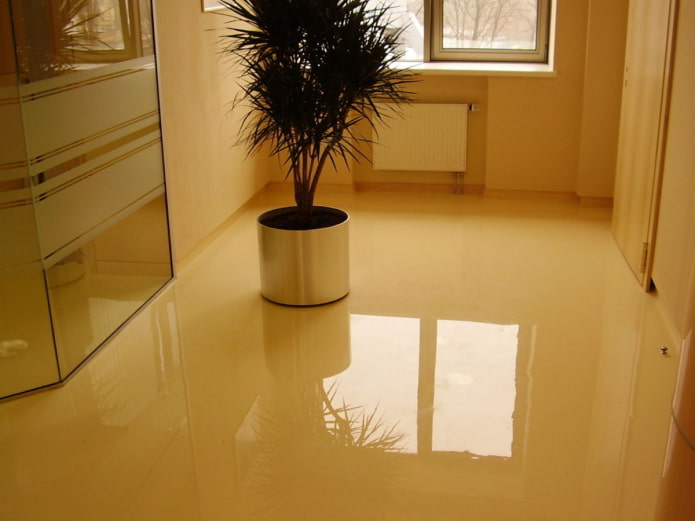


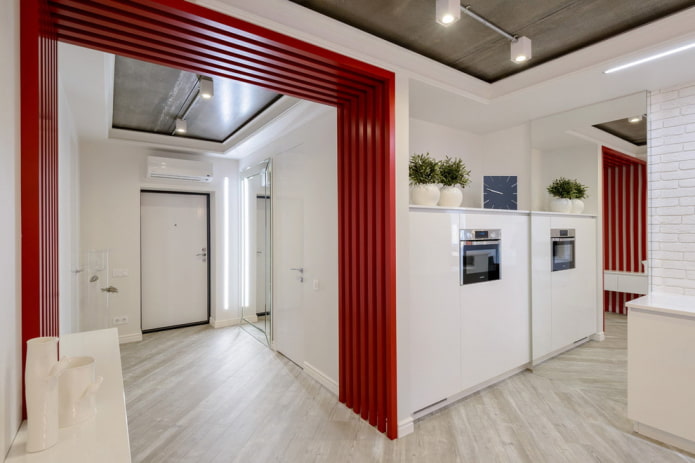
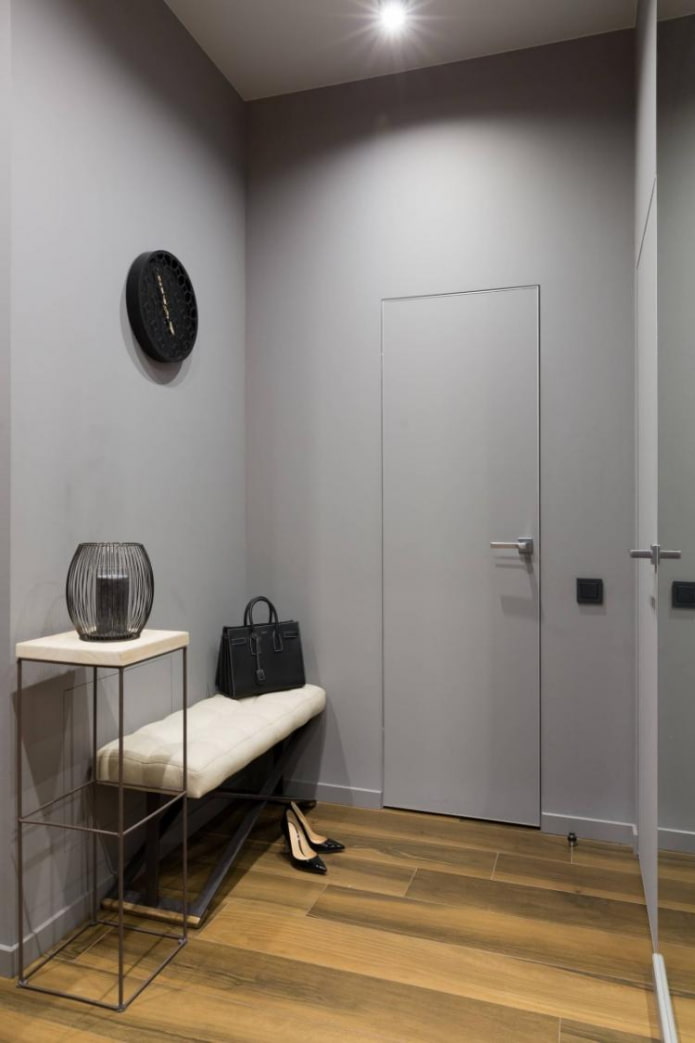
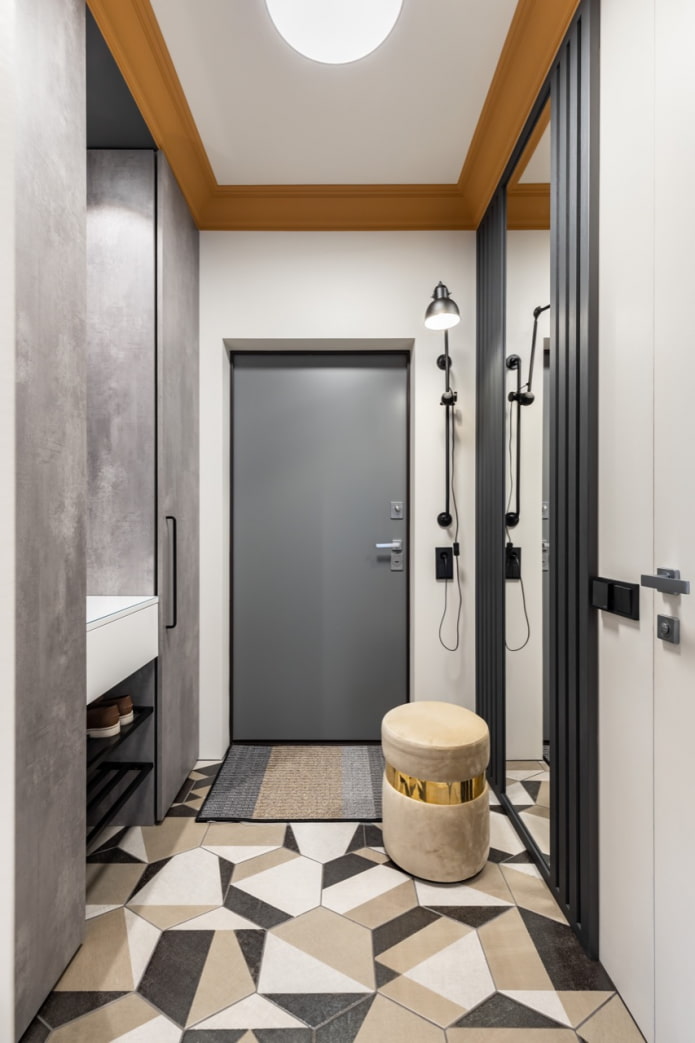
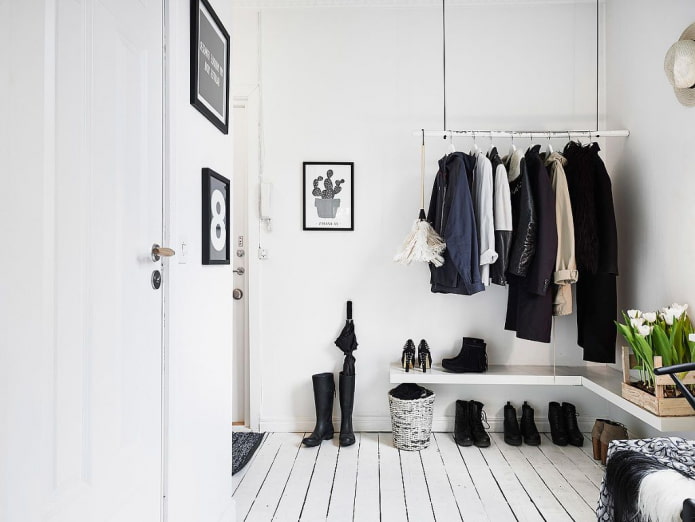
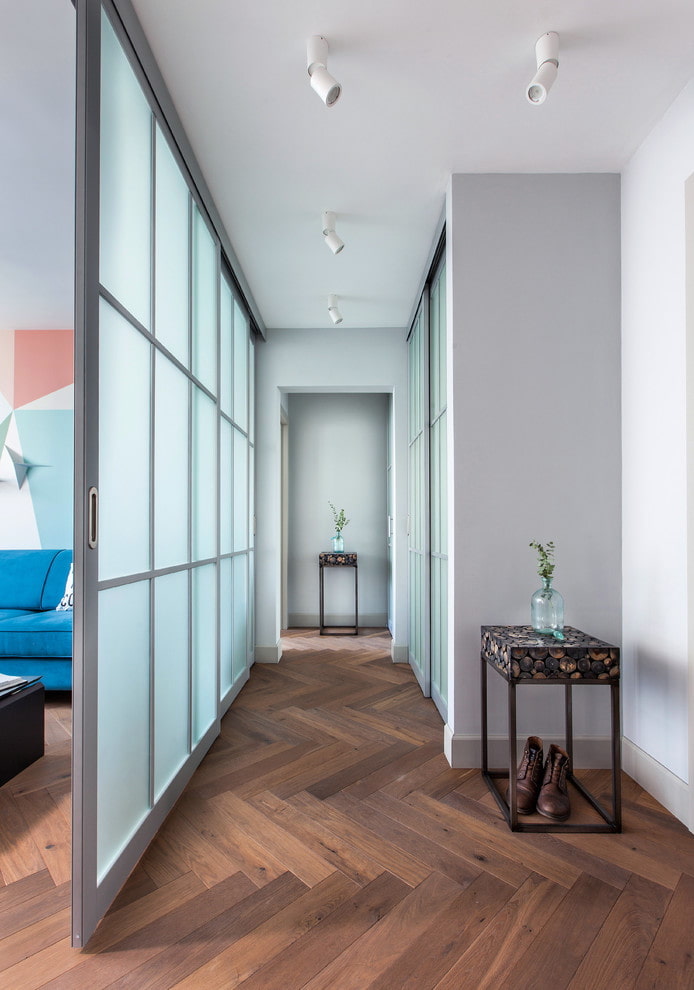
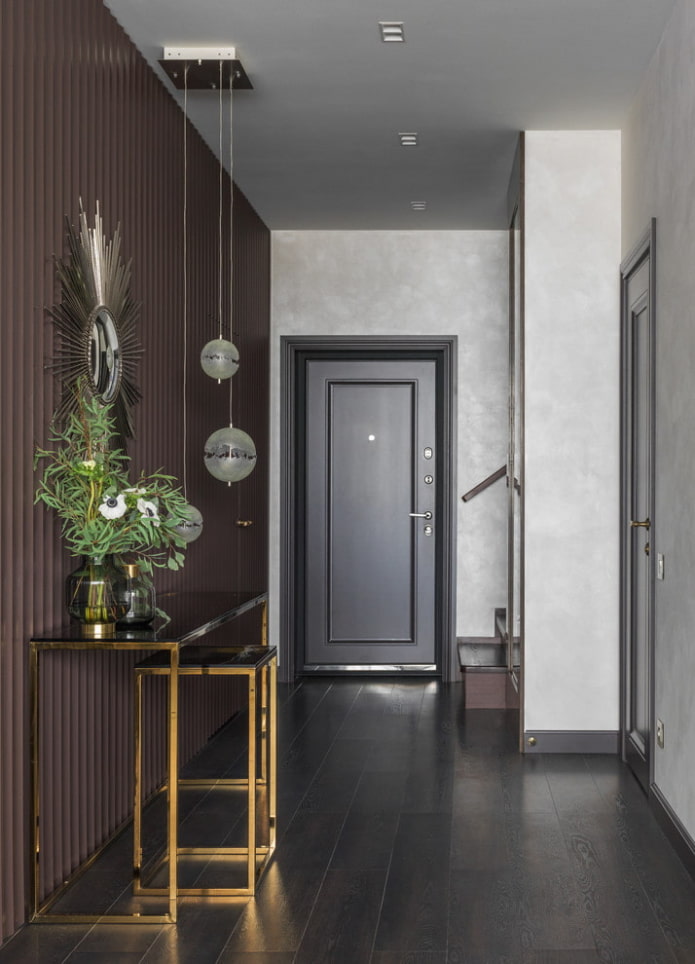
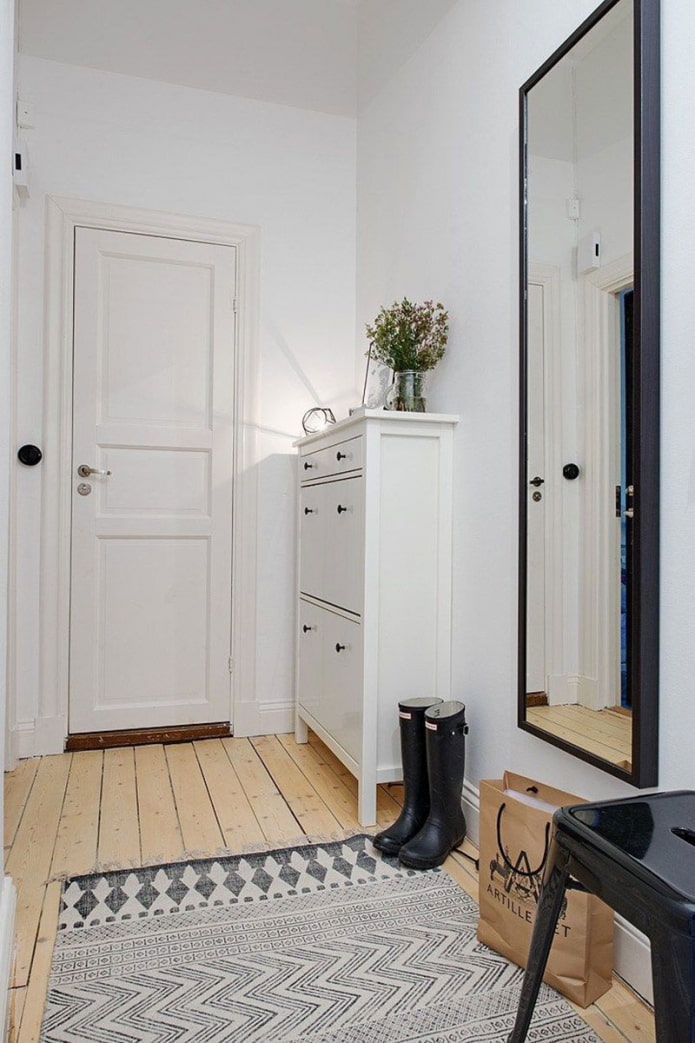
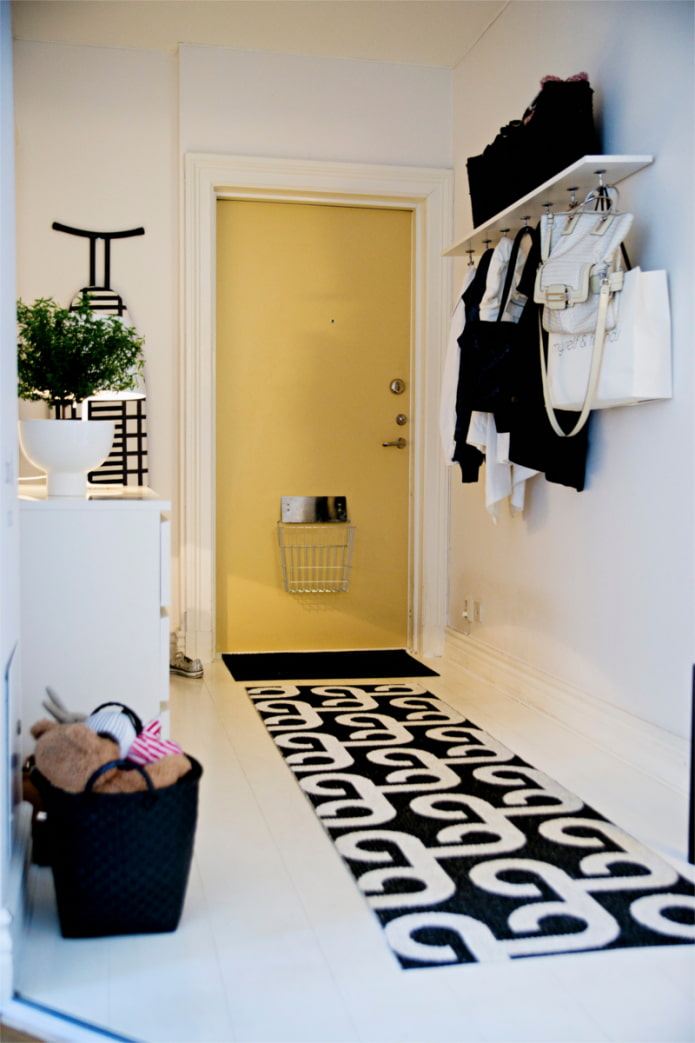
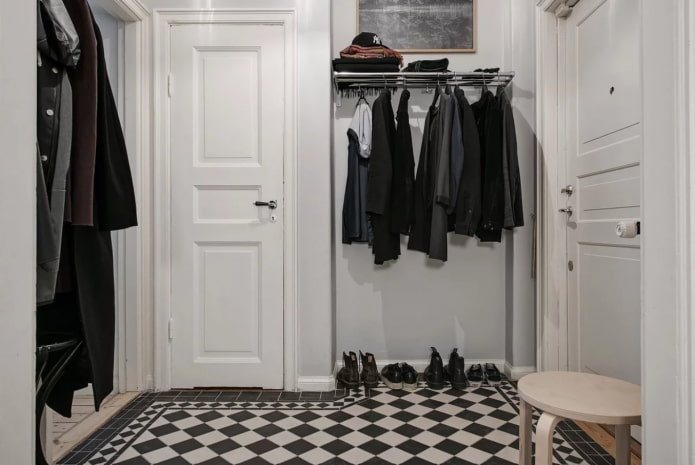
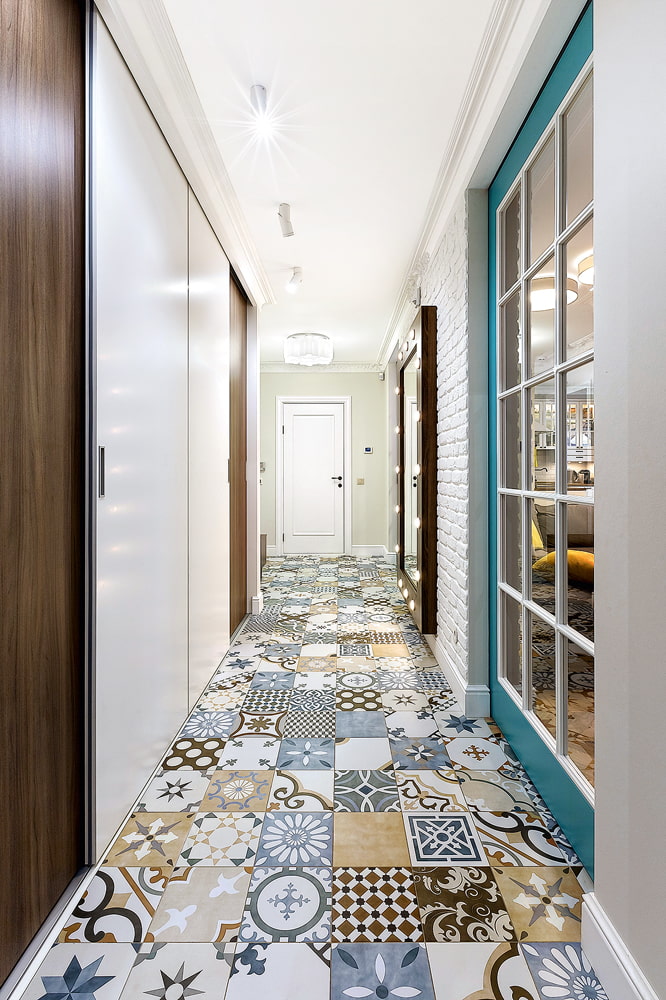


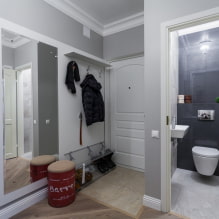
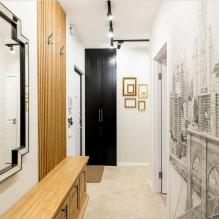
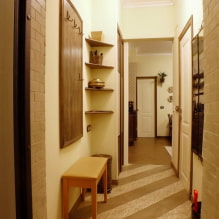
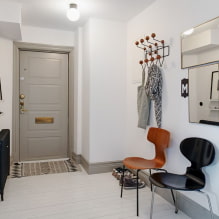
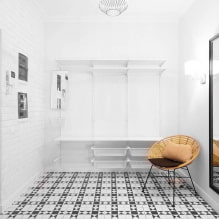

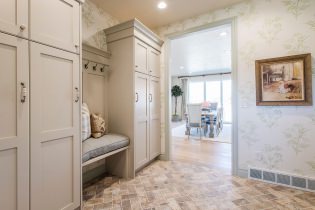 How to choose wallpaper for a small hallway: 70 design ideas
How to choose wallpaper for a small hallway: 70 design ideas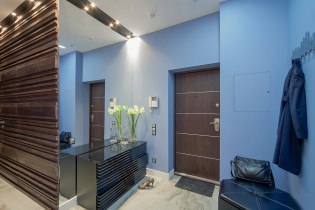 How beautiful to make a hallway in an apartment: design ideas, layout and arrangement
How beautiful to make a hallway in an apartment: design ideas, layout and arrangement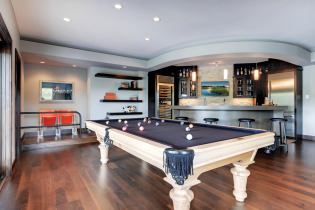 Billiard room interior in the house: design rules, photo
Billiard room interior in the house: design rules, photo Hallway design in white
Hallway design in white The most beautiful swimming pools in the world
The most beautiful swimming pools in the world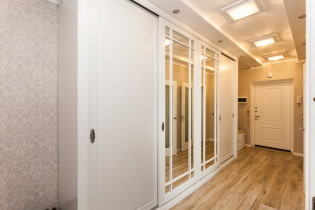 How to choose a wardrobe in the hallway?
How to choose a wardrobe in the hallway?